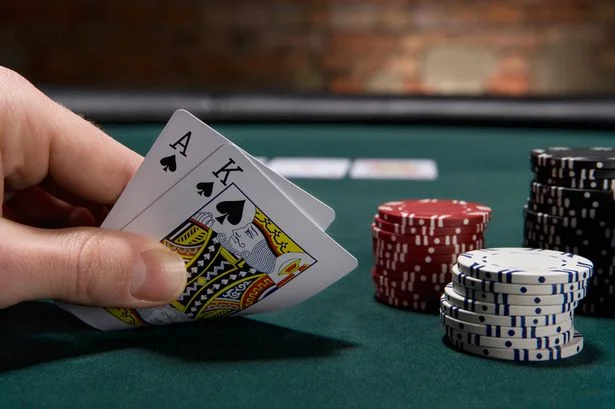How To Make Casino Chips
The creation of casino chips, an integral part of the world of gambling, is a complex and fascinating process that has evolved significantly over time. From their humble beginnings as simple clay pieces, casino chips have transformed into the beautifully designed and intricately crafted tokens we know and use today. The invention of poker chips, unique and innovative, is testament to the genius of human creativity, and these chips now serve as a standard in games of chance across the globe. Dive into this captivating journey with us as we delve deeper into the intricate process behind the creation of these iconic casino tokens.
History Of Poker Chips
The inception of poker chips dates back to the 19th century, during the early days of gambling in the Western United States. Prior to their introduction, gamblers used petty items like gold nuggets, coins, and even gold dust as betting currency in poker games. However, the need for a standardized betting currency led to the birth of poker chips.
Poker chip material consisted of various materials such as bone, wood, clay, and were often decorated with unique markings denoting their monetary value. However, these primitive chips were easy to counterfeit, leading to an urgent need for standardization and security.
The evolution of poker chips took a significant turn in the late 19th century with the introduction of clay composite chips. These chips were composed of clay mixed with other materials like chalk and sand, offering a more durable and aesthetically pleasing solution. Their unique ‘clinking’ sound added a sense of authenticity and excitement to the games, further enhancing their popularity.
Over time, as the demand for high-quality, counterfeit-proof chips grew, manufacturers began to innovate. The 20th century saw the advent of casino-grade clay chips, which integrated intricate designs and vibrant colours to counter forgery attempts. The increased security and uniformity enabled a more honest and streamlined poker gaming experience.
In today’s world, poker chips have further evolved into sophisticated tokens with intricate security features, including intricate mould designs, unique colour combinations, and even RFID tags. Despite the leaps in technology, the traditional clay composite chips remain a favourite among many for their classic look and feel.
The transformation of poker chips from simple makeshift tokens to the beautifully crafted pieces we see today is a testament to the ever-evolving nature of the gambling industry. As we continue to innovate, who knows what the future holds for these iconic symbols of the world of poker.
When Were The First Chips As We Know Them Today
The first poker chips as we know them today made their appearance in the wild west of the United States. In the midst of saloons, cowboys, and the rugged frontier lifestyle, the birth of these iconic tokens marked the start of a new era in the world of gambling. Initially, poker chips were constructed from a variety of readily available materials such as bone, wood, and clay. These primitive tokens were often adorned with unique markings to distinguish their value during high-stakes games.
As the popularity of the game grew, so too did the need for a more uniform, secure, and aesthetically pleasing form of currency. In the late 19th century, this need was addressed with the introduction of clay composite chips. These chips were a combination of clay and other materials like chalk and sand, providing a more durable and attractive alternative that quickly became the standard in poker games.
Fast forward to the present day, and poker chips have undergone a dramatic transformation. Current-day poker chips are marvels of design and technology, incorporating advanced security features to prevent forgery. The traditional clay composite is still a common material, but modern chips often also incorporate plastic, metal, and even RFID tags for added security. Despite the advent of advanced materials and technologies, the essence of the poker chip remains unaltered, continuing to serve as an indispensable part of the thrilling world of poker.

How Poker Chips Are Made These Days
Modern poker chips production is a meticulous process that involves the use of various materials and technologies to ensure their durability, attractiveness, and security. The chips are primarily made from a clay composite, a mixture that typically includes clay, chalk, and sand. This combination ensures the chips’ longevity while providing the ‘clinking’ sound that is iconic to the poker gaming experience.
In addition to the clay composite, these chips may also incorporate other materials such as plastic or metal to improve their texture and weight. Some premium quality chips even have inserts made of metal to give them a substantial heft that enhances the overall gaming experience.
Furthermore, to prevent theft and counterfeiting, contemporary poker chips are designed with sophisticated security features. One such feature is the use of RFID (Radio Frequency Identification) tags. These tags can be embedded into the chips, allowing casinos to track their movement and instantly identify any that have been unlawfully removed from the premises.
Poker chips are produced by numerous companies worldwide, each boasting their unique design and security features. Some of the most notable manufacturers include Brybelly, Trademark Poker, and Da Vinci. These companies are renowned for the quality and authenticity of their poker chips, ensuring that they adhere to the high standards set by the casino industry. These chips are not only used in casinos but are also popular for home poker games, providing players with a genuine poker experience regardless of their location.
What Is The Difference Between Regular Chips And Casino Chips
The distinction between casino chips and those available for public purchase is essential to understand. Casino chips are custom-made and unique to each establishment. Each casino has its own specific design, colour palette, and often unique security features embedded within their chips. This is to ensure the integrity of the games and to prevent any potential fraudulent activities.
Contrarily, poker chips for public sale are quite generic and bear no security features. They are designed for casual, non-professional use in friendly home games or local tournaments. While these chips endeavour to emulate the look and feel of casino chips, they lack the high level of detail and anti-counterfeit measures that are inherent in casino-grade tokens.
Casino chips often contain RFID tags, intricate mould designs, unique colour combinations and sometimes even microprinting. This ensures that they are nearly impossible to replicate, thus maintaining the fairness of the game and the security of the casino’s assets. The custom nature of these chips also adds to the atmosphere and allure of the casino environment, further enhancing the gaming experience for patrons.
In summary, while poker chips available for public sale may serve their purpose for casual play, they are no match for the bespoke, security-centric design of true casino chips. The latter’s unique attributes not only uphold the integrity of casino games but also contribute to the enchanting aura of the gambling world.
How To Identify Chips By Color
In the world of gambling, poker chips are more than just game tokens. They are an integral part of the gaming ambiance, each color carrying a specific denomination. While the color-to-denomination correlation can vary between casinos, there is a generally accepted standard that most establishments adhere to.
|
Chip Color |
Typical Denomination |
|
White |
$1 |
|
Red |
$5 |
|
Blue |
$10 |
|
Green |
$25 |
|
Black |
$100 |
|
Purple |
$500 |
|
Yellow |
$1000 |
|
Pink |
$5000 |
|
Orange |
$10000 |
One of the highest-valued chips in history was a pink chip worth $25,000. This exorbitantly valued chip was used in high-stakes games at the renowned Bellagio casino in Las Vegas. However, the all-time record for the most expensive chip goes to the London Club at Aladdin Casino in Las Vegas. This chip was not remarkable for its color, but for its denomination – a staggering $100,000. These examples highlight the incredible stakes of high roller casino games and the prestigious role that poker chips play in this thrilling world.
Signs Of a Sneaky Chip
When it comes to authenticating poker chips, it’s important to note that only casino-grade chips have distinctive features that make them verifiable. These chips are meticulously crafted to ensure the integrity of casino games and deter counterfeit efforts. A keen eye and knowledge of these unique signs can help distinguish an authentic chip from a forgery.
Below are some telltale signs of an authentic poker chip:
- Weight: Genuine casino chips typically weigh between 8.5g and 10g. However, this can vary between establishments, so it’s crucial to be familiar with the weight standard of the particular casino.
- Size: Standard poker chips measure 39mm in diameter, but some casinos use chips that are 40mm or even 43mm. The thickness can also vary, typically between 3.3mm and 3.5mm.
- Edge Spots: Authentic chips have well-defined, evenly distributed edge spots. These spots are intentionally irregular and varied to deter counterfeiting.
- Texture: Real casino chips have a unique texture, often a rough surface, that is hard to replicate.
- Inlays: Inlays or stickers on real casino chips are typically hard to peel and are flush with the chip surface, unlike counterfeit chips where the inlays might protrude or peel off.
- Security Features: Many casinos use advanced anti-counterfeit measures such as RFID tags, microprinting, UV markings, and holographic strips.
Remember, while the signs mentioned above are a good starting point for authentication, it’s crucial to keep in mind that these can vary significantly between different casinos. To truly verify the authenticity of a casino chip, detailed knowledge of the specific casino’s standard is paramount.
Why Casinos Use Chips
Casinos didn’t arbitrarily decide to use chips for table games; the decision was instead a strategic one, deeply rooted in the history and mechanics of the gambling industry. Chips have been a cornerstone of casino games for centuries, chosen over other potential methods due to their inherent benefits.
- Security: Chips are custom-designed with intricate details and advanced anti-counterfeit measures like RFID tags, microprinting, and unique colour combinations. These features make chips virtually impossible to forge, ensuring the integrity of casino games and the security of the casino’s assets.
- Brand: Each casino has unique chips that are reflective of its brand. This not only differentiates one casino from another but also helps create an exclusive gaming ambiance. The colours, design and feel of the chips can greatly enhance a player’s experience, contributing to the casino’s overall brand identity.
- Convenience: Chips are an efficient and practical solution for casinos. They are easier to handle and quicker to use in games, compared to real money. Additionally, chips clearly denote different denominations, eliminating potential confusion in quick-paced games.
- Psychological Factor: When players wager with chips rather than real money, the psychological attachment to the value decreases. This can often lead to players making larger bets, benefiting the casino in the long run.
- Control of Money Flow: Chips also enable casinos to control the money flow on the gambling floor efficiently. By making players purchase chips, casinos can manage the cash flow while also tracking win and loss statistics more accurately.
In essence, the use of chips in casinos is a strategic decision, offering benefits in security, branding, convenience, and control of financial transactions. They are more than mere game tokens; they are a crucial part of the casino industry’s infrastructure.



